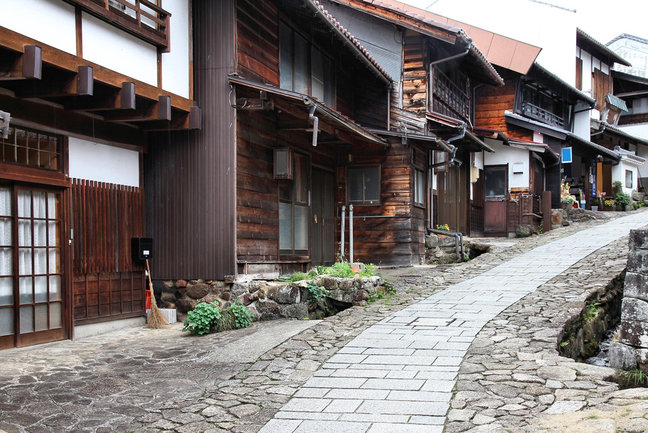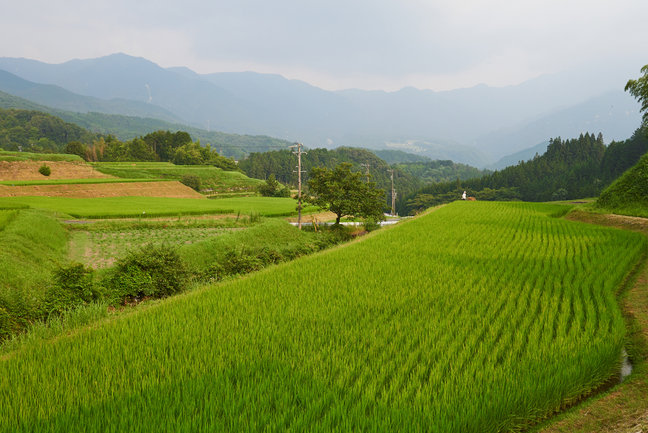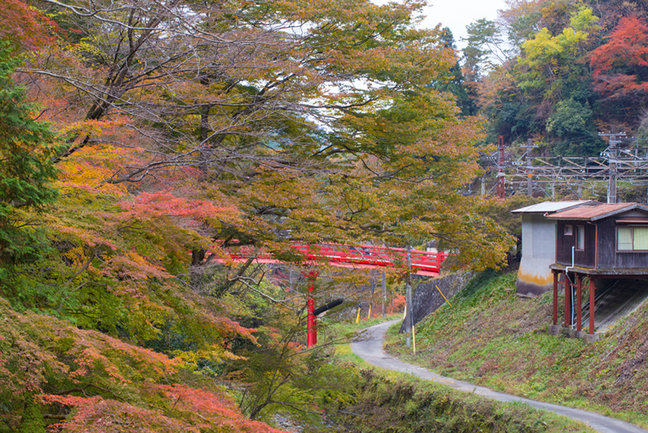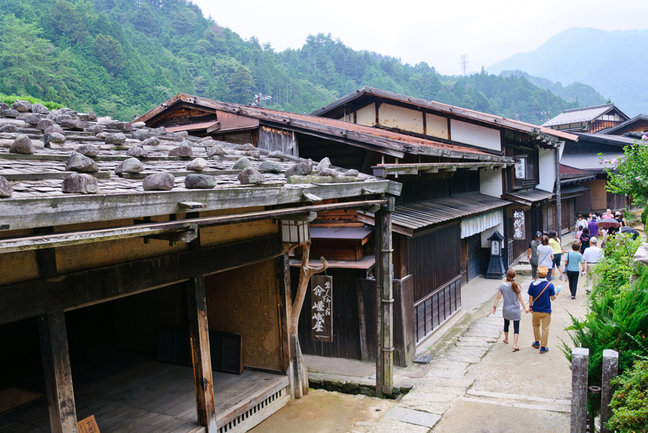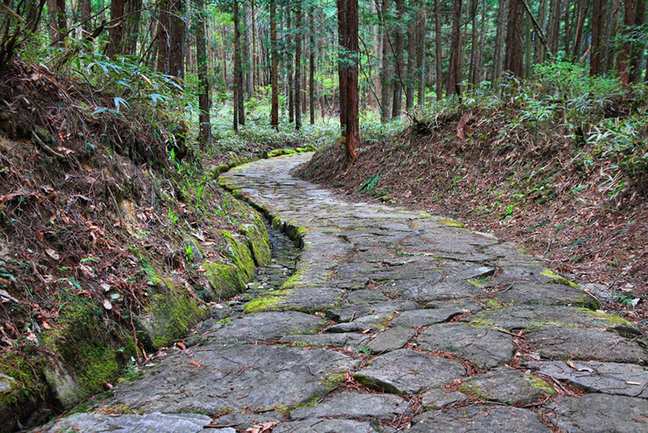Please enter your username and password to logon to the member pages

Japan Nakasendo Way
Japan Nakasendo Way Overview
Japan Nakasendo Way: A journey into the heart of Japan An iconic walk of Japan on the Nakasendo Way that linked Kyoto to Tokyo during Japan’s feudal period. Join this small guided tour starting in Tokyo for a walk along the best-preserved parts of the old road into the mountains for an intimate experience of Japan off the beaten track.Walk through beautifully-preserved old post-towns, explore rural communities, stay in traditional inns, enjoy the sumptuous regional cuisine, soak in natural hot springs, and enjoy the warm hospitality of your hosts.
Best time to visit: Spring and autumn, April, Sep, Oct.
Touring style: self-guided walk or part of a small group
Day 1: Arrival Tokyo
On arrival, make your own way to your hotel or we can arrange a private transfer.
Meet up with the rest of your travelling companions and your tour guide. Welcome dinner.
Overnight in Tokyo.
Day 2: Walking tour of Tokyo
This is a fully guided tour and your guide will be with you until the end of your walking holiday.
Start your walking tour in Tokyo at Nihonbashi (the ‘Japan Bridge’). Continue to Ueno and the Tokyo National Museum to see exhibits illuminating Japan of the Edo era. Visit the Meiji shrine and the fashionable Harajuku district. The rest of the day will be at leisure.
Overnight in Tokyo.
Day 3: Nakasendo Way from Kiso-Hirasawa to Narai
Start your walking tour through rural Japan from Tokyo to the Kiso valley. After an optional lunch of buckwheat noodles in the local town of Shiojiri, walk from Kiso-Hirasawa to Narai. Kiso-Hirasawa is known for its locally-produced lacquerware and there may be a chance to see the craftsmen at work. Stay in Narai, a beautifully-preserved post-town. Stay in an atmospheric traditional minshuku.
Walking distance: 2.5km / 1.6 miles
Elevation gain: negligible ascent and descent
Time required: 1 hour
Accommodation: Minshuku (Family-run guest house)
Day 4: Nakasendo Way from Narai to Kiso-Fukushima.
Walk from Narai to Yabuhara over the Torii Pass and travel by train to Kiso-Fukushima. Stay in a traditional ryokan with its own natural hot spring.
Walking distance: 6.2km / 3.9 miles
Elevation gain: 270m/885 feet ascent; 344m/1,128 feet descent
Time required: 3 hours
Accommodation: Hot-spring Ryokan (Travellers inn)
Day 5: Nakasendo Way from Kiso-Fukushima to Tsumago
Leave by train from Kiso-Fukushima to Nojiri and overland to the Nenoue-Toge pass. Walk along the Nakasendo Trail through delightful small villages and rice fields to Tsumago. This post-town on the Nakasendo Trail is preserved by strict self-imposed rules that prohibit the sale, rental or destruction of the handsome houses. It’s a living museum inhabited by the local residents.
Walking distance: 14km / 8.7 miles
Elevation gain: 344m/1,129 feet ascent; 723m/2,275 feet descent
Time required: 4.5 hours
Accommodation: Minshuku (Family-run guesthouse)
Day 6: Nakasendo Way from Tsumago to Magome; onwards to Nara
From Tsumago walk to Magome, the last stop in the Kiso Valley. The trail from Tsumago to Magome is the most beautiful and best-preserved part of the Nakasendo Trail. There will be time to explore the many small shops along the picturesque main street. Afterwards, travel by train to Nara for overnight.
Walking distance: 8.3km / 5.2 miles
Elevation gain: 430m/1,410 feet ascent; 326m/1069 feet of descent
Time required: 3 hours
Overnight in Nara
Day 7: Nara walking tour
Walk through Nara with your guide. Many of Japan’s greatest cultural treasures are concentrated in and around the city, with eight UNESCO World Heritage sites - Todai-ji Temple, Kofuku-ji Temple, Kasuga Taisha Shrine, Kasugayama Primeval Forest, Nara Palace Site, Ganko-ji Temple, Yakushi-ji Temple and Toshoda-ji Temple. Many of these sites are in or near Nara Park, home to a thousand or more free-roaming deer. The walk will include a visit to two of these World Heritage sites, Kasuga Taisha Shrine and Todaiji temple -its Daibutsu-den is the largest wooden building in the world, housing a 16-metre tall image of the Rushana Buddha in bronze and gold.
Overnight in Nara
Day 8: Nara to Yoshino village
From Nara, depart to the ridge-top village of Yoshino. Yoshino is a UNESCO World Heritage Site and one of the most famous places in the whole of Japan for viewing cherry blossom in the spring.
Accommodation: Ryokan (Travellers Inn)
Day 9: Yoshino to Koyasan
Take the scenic train to Mount Koya, situated in a bowl-shaped valley filled with stands of cedar trees high in the mountains of the Kii Peninsula. Since the 9th Century, Mount Koya has been a place of religious devotion and ceremony. Today there are more than 100 monasteries, many of which have shukubo (temple lodgings). Visit Kongo-buji temple and walk through the vast Okuno-in Cemetery.
Accommodation: Shukubo (Pilgrims lodging)
Day 10: Koyasan to Kyoto
Rise early and join the Buddhist morning service. Afterwards, travel by train to Kyoto.
Kyoto was Japan’s capital for many centuries and is still regarded as the country’s cultural heart.
In the evening, enjoy a walk in Gion, Kyoto’s geisha district and there is the possibility of seeing a geiko (fully-fledged geisha) or maiko (apprentice geisha) making their way through the narrow streets.
Overnight in Kyoto.
Day 11: Kyoto touring
Join a guided half-day walking tour this morning. First visit the Sanjo-ohashi Bridge, the western end of the Nakasendo Trail. Continue to Nanzenji, a tranquil Zen Buddhist temple whose history dates back to the mid 13th century. Take a stroll along the Philosopher's Path, with craft shops, cafes, shrines, and temples beside the clear waters of a small canal. The path ends near Ginkakuji, the Silver Pavilion.
Farewell dinner.
Overnight in Kyoto.
Day 12: Departure
Transfer to the airport for your flight home or continue your Japan adventure with a beach stay in Okinawa.

